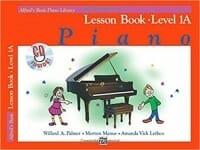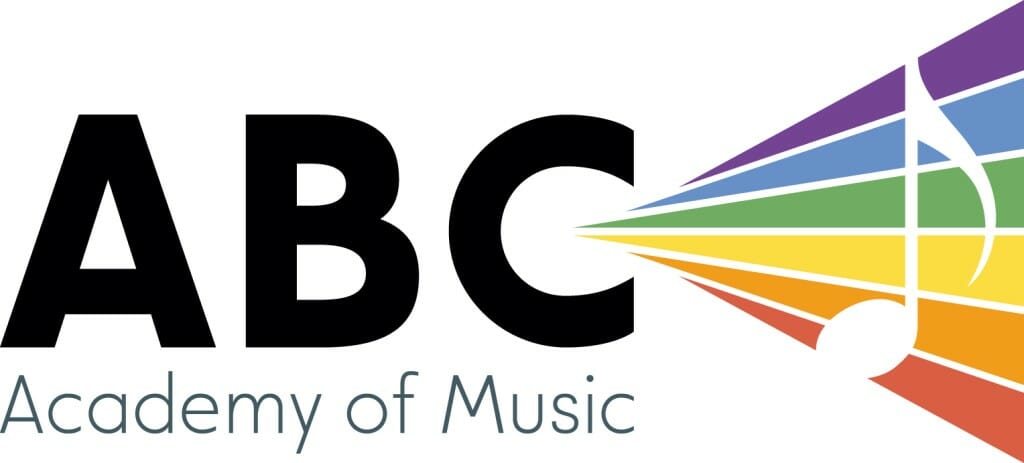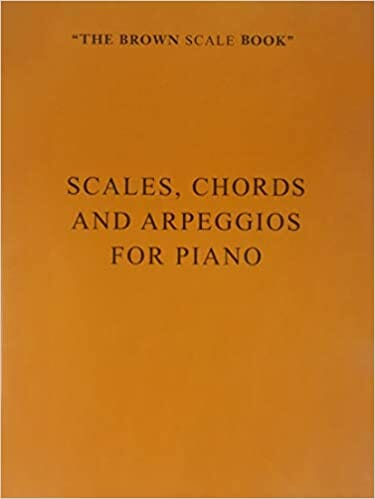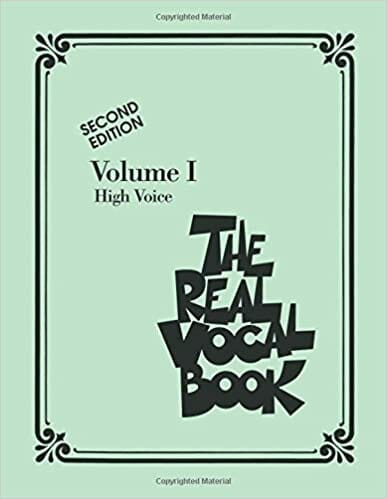B.Mus (Humber) in-progress
Adina is a singer-songwriter based in Toronto completing her Bachelor of Music degree at Humber College in vocal performance. Trained classically in piano since the age of 5, she has branched out into pop and jazz as well.
Vocally she is well-versed in many genres including jazz (she loves to scat!), musical theatre, pop, singer-songwriter, country, R&B, and acappella. She has 7 years of choir experience in both chamber and jazz styles. Adina has been writing and singing original songs since the age of 12, and has two singles as well as an EP out on all platforms under the artist name Adina V.
She has performed all across southern Ontario singing with the Toronto All-Star Big Band, as well as at various venues in the GTA with her own jazz duos and trios. As a member of the Cawthra Park Chamber Choir she performed at Roy Thompson Hall with the TSO for two years in a row. At Humber College she is part of the Vocal Jazz Ensemble led by Lisa Martinelli; this group performs advanced repertoire at events like the Ontario Vocal Jazz Festival.
Adina has been teaching music for the past 7 years and loves helping students meet their personal goals while fostering a love of music that lasts forever!
Get to know Adina…Beyond the Bio!
Hobbies: reading, puzzles, video games, painting
Musical Influences: Ella Fitzgerald, Nancy Wilson, Doris Day, Joni Mitchell, Taylor Swift, John Mayer
Favourite Food: Pad Thai
Least favourite food: eggplant
Favourite music: Indie rock and folk
Favourite song: All I Need by Jacob Collier ft. Mahalia & Ty Dolla $ign
Favourite movie: Matilda
Favourite movie music: The Pirates of the Caribbean theme
Favourite Musical: Dear Evan Hansen or The Last Five Years
Best Quote from your teacher: “It’s an amazing and wonderful experience to be able to be intentional about, in the moment, making music”
Favourite Quote: “Even as we are, we are becoming”
Favourite Book: The Girl With the Dragon Tattoo trilogy – Stieg Larsson
Best thing about teaching at ABC: Sharing and fostering a love of music with students of all ages
Latest Homework from Adina
Is Adina Your Teacher?
Sign up now to get your weekly assignments delivered, and never lose your homework sheet again!
Sunday, February 14, 2021
Happy Valentine’s Day!
Emet
For your warmup this week, please play D major triads. The difference between these and your previous D minor triads is that F is now sharp. All fingerings should stay the same; just slide your hand further into the keys so it’s easier for thumb and finger 5 to reach the sharp.
Piano Man – Let’s play up until bar 17 hands separately. RH sometimes has two voices in one hand, which means there will be notes with stems going up and going down in the same bar. Make sure to hold all notes full value even when this is the case (for instance bar 6 that half note should continue to hold as the top note changes, etc.). LH watch the slur articulation – beat 1 is connected to beat 2. LH may continue to read on to page two, since there are patterns that repeat. RH’s part is much more involved, so only do the first page this week.
Please still practice Hunting Song, as we will start with that this week
Nathalia
For the warmup this week we are doing the G major scale hands separately. The fingering is the same as with C major, the one difference is we have an F#. If you feel comfortable as the week goes on, you may try it hands together.
Bye, Bye Love – This week play the entire verse hands together (so up until bar 18). RH do be careful with following the written finger numbers – they are there because it’s the easiest way to reach the notes. Like we did in lesson today, go back and forth between the two chords in bar 16 and 17 to get them feeling really comfortable. Please do still play the chorus hands separately, noticing what sixths look like on the music.
Kollel
This week our scale is E major (4 sharps – F#, C#, G#, and D#). Let’s actually go hands separately so that LH can be extra careful with crossing fingering.
Pachelbel’s Canon – The first 4 lines can absolutely be played hands together, as well as with pedal. Adding the pedal as soon as possible helps LH feel more legato even when there are big jumps in the part. RH, in line 4, try to stay up into the keys for the entire phrase as opposed to coming down for the thirds with 2 white keys, then having to slide back up every time there’s a sharp. This week let’s add line 5 in (hands separately). LH’s part in lines 5 and 6 is identical, so it’s only necessary to play the one line. LH notice your pattern: it’s always 1-5-1-3 (triad degrees) for each chord. RH, do your best to land on the finger numbers we wrote in for beats 1 and 2 in this line. As always don’t forget your key signature! F and C are sharps regardless of the octave.
Etude in G – The middle section could use some extra attention; play it a couple of times isolated before playing the whole piece through. RH be careful to still do the staccatos on beat 1 even if LH has the held dotted half note (this happens in bars like 11, 12, 20).
Next week we will pick a new studies piece.
Tuesday, February 16, 2021
Ken
For our warmup this week, let’s review the C major scale, hands separately. In the RH, fingering is 1-2-3-1-2-3-4-5 on the way up, and it’s reverse on the way down. For LH, fingering is 5-4-3-2-1-3-2-1 on the way up, and again reverse on the way down.
A Minuet for Mr. Bach’s Children – Pay extra attention to which notes are played with which hand; there are many bars where eighth notes go between the RH and LH. It’s important to follow the fingering and keep the hands in the position they start in – they actually never have to lift in this song!
Mr. Brahms’ Famous Lullaby – Similarly to the previous piece, this one has a lot of back and forth between the hands, so look out for which clef notes are in. There are lots of Bbs in this song – when there is a flat notated, it lasts for the entire bar (so in bar 6 that second B is also flat). As the piece gets more comfortable, start adding in the dynamics.
Steve
See if this week you can get closer to memorizing the sayings for treble clef (Every Good Boy Deserves Fudge, FACE in the space) and bass clef (Good Birds Don’t Fly Away and All Cows Eat Grass).
My Daydream – This week you can definitely put this piece hands together. No need to go too fast! This piece should actually be a medium tempo. LH please remember your part should also be legato (connected). The very last line is 8va, which means up one octave.
The Clock Strikes Thirteen – In this piece we learned about the crescendo (getting gradually louder) and diminuendo (getting gradually softer). Before putting the hands together, please play each hand by itself so you can practice doing those dynamics a little easier. LH, in the very last 2 bars you have a tie – this means you don’t replay the second set of notes, you just hold them through.
Gabe
Merry Widow Waltz – This will be our new dynamic-focus piece this week. Please ignore the m in the dynamic markings – let’s just play either f or p for more contrast. In this piece there are also crescendos and decrescendos – do your best to observe these as well.
Theme from Don Giovanni – This piece can be put hands together this week, except for the last two lines. Please play bars 16 to the end a few times with RH by itself. It’s extra important to follow the fingering here, specifically the 1 on G in bar 16.
Today we spoke more about intervals, and listened/played intervals from a 2nd all the way up to an octave. You can practice this concept by keeping C as your bottom note and playing around with these intervals; then, if you’d like you can choose a different note as the bottom and try getting the correct interval sound from there.
Isaac
For your warmup this week, please put the F major scale hands together. Also, see if you can get closer to memorizing the sayings for treble clef (Every Good Boy Deserves Fudge, FACE in the space) and bass clef (Good Birds Don’t Fly Away and All Cows Eat Grass).
Andante in G Minor – This week try the second part of the piece hands together as well. The more you exaggerate your detached quarter notes, the less you have to worry about large jumps (like in bar 6) or any accidental finger mixups. Note that LH’s bar 6 and bar 10 are the same letter names, just an octave apart.
Early One Morning – This will be our new piece! We are in G major, so there is an F# in our key signature. Play through the whole piece hands separately, being especially careful with RH’s steps versus skips. Using your sayings will help with sight reading a lot!
Wednesday April 21st, 2021
**My apologies to everyone I had mistakenly told the recital was this weekend – I had thought we were in the last week of April, but we do have one more week of lessons. The recital will take place next weekend**
Dvorah
Recommended minutes to practice: 10 minutes a day
What to practice: Ode to Joy, My Invention
How to practice it most effectively: In Ode to Joy, we learned the middle part of the piece today (the letters we wrote on the yellow construction paper). In this section, our E-F bit is faster than the rest of the letters which are all quarter notes. Please spend some extra time with this part of the song. The full song form will be 1st line, 2nd line, yellow page, then 2nd line again. In My Invention, we added a repeat sign to make the song a little longer. Please play the first time through loud, and the repeat soft for contrast.
Diya
Recommended minutes to practice: 15-20 minutes a day
What to practice: Do-Re-Mi up the scale, Do a Deer, C 5-Finger Warmup, Firefly
How to practice it most effectively: For a vocal warmup, please sing the C major scale using do-re-mi etc. First play and sing along with the piano, but then try singing up the scale without the piano, doing your best to connecting smoothly between the syllables. This lesson you did the whole scale in one breath! In Do, a Deer let’s continue playing the piano notes as you sing, but pay extra attention to the sol, la, ti sections. On piano, these are: G-C-D-E-F-G-A, A-D-E-F#-G-A-B, B-E-F#-G#-A-B-C. To make the piano playing easier, cross under your finger 3 every time. In the C 5-Finger Warmup, please follow along carefully to make sure you’re not accidentally repeating your Gs and Cs. The finger numbers written over the exercise will help with this. In Firefly, let’s add the 3rd line (from bar 9-12). Continue using your sayings to help you with any notes you’re unsure of, as well as noticing steps vs. skips distances.
Marco
Recommended minutes to practice: 10-15 minutes a day
What to practice: Mexican Jumping Beans, Sailing in the Sun, Ferris Wheel, finishing up theory page
How to practice it most effectively: Mexican Jumping Beans will be our warmup song this week: the little dots above or below the notes are staccatos, meaning you play nice and short, with a bouncy wrist. In Sailing in the Sun, please be really obvious about your quarter rests, and gradually try to speed it up a little! Ferris Wheel is sounding quite confident – when singing along, stay on the 2nd highest C for the last part; it’s definitely too high to sing!
Oliver
Recommended minutes to practice: 10-15 minutes a day
What to practice: C position skips warmup, The Rainbow
How to practice it most effectively: Our C position skips warmup can be done hands together now: both hands in C position will play C-E-G-E-C, trying your best to connect. In The Rainbow, please only play the first 3 lines hands separately for now. Notice the back and forth RH pattern in the first couple of bars of the 1st and 2nd line. As always, use your sayings for the treble clef to help you read the melody. If towards the end of the week the song starts feeling really comfortable hands separately, you can try hands together!
Alice
Recommended minutes to practice: 15 minutes a day
What to practice: Yankee Doodle, A Joke for You, Little Do You Know, Attention
How to practice it most effectively: In Yankee Doodle, please pay extra attention to bars 5-6 where we skip from E to C then back to E. You can start singing the lyrics along to this song! A Joke For You introduced 2 new LH notes: C is on the 2nd space, and D is on the 3rd line. RH is still playing in our regular C position. For Little Do You Know, please sing along with the lyric video, and do your best to follow the girl’s part whenever they sing together. The third chorus is the trickiest part, since she hops up to an upper harmony. Still continue singing Attention since it’s a great contrasting song. We’ll start with that one next week.
Linda
Recommended minutes to practice: 15-20 minutes a day
What to practice: New Shoes, Pure Imagination
How to practice it most effectively: New Shoes’s lines 1 and 2 are already doing great hands together, so let’s work to add lines 3 and 4 together as well this week. Line 4 is a nice contrast to the first 3’s bouncy rhythm – ground down into those accented chords. Pure Imagination is sounding more and more comfortable every week – you can start humming or singing the melody while you go through the shapes to feel the rhythm and flow a bit more. The chords to watch out for are the E-7b5 (E-G-Bb-D) and the F-7 to F7 transition (only the Ab changes to an A natural).
The Cry Me a River PDF can be found here: https://drive.google.com/file/d/163jvg2D3bXxtVyUiRG-GLct9F9tGoNQL/view?usp=sharing
Emet
Recommended minutes to practice: 20 minutes a day
What to practice: Bb major scale (hands separately 1 octave), Piano Man
How to practice it most effectively: Our Bb major scale has slightly different fingering from our usual scales. The 2 flats to use are Bb and Eb. RH’s fingering is 4-1-2-3-1-2-3-4, and LH’s fingering is 3-2-1-4-3-2-1-3. For Piano Man, the biggest thing to practice is actually our page flip! RH should get off the dotted half note C in bar 33 ASAP to flip the page over (no need to hold for 3 beats since your pedal is down). The way to practice this is to go from bar 31 until the “da da” section a few times. In addition, be conscious of where you are in the music even if you’re not looking at it 24/7 just so you don’t accidentally slip into another verse’s RH pattern. In the ending, be extra clear with your pedal changes so each chord sounds distinct – time is on your side here since it’s a rit!
Kollel
Recommended minutes to practice: 20-25 minutes a day
What to practice: Ab major scale, Canon, Dance of the Dragonflies
How to practice it most effectively: For the Ab major scale, please play it hands separately for two octaves each hand. For Canon, start a little slower than you usually do – give yourself time to breathe and look ahead to what comes next. As you go through the song, continually remind yourself to keep this slower tempo, since the instinct is to rush. I suggest isolating the 3rd and 2nd last lines, particularly noting the difference between bars 32 and 36. The biggest thing that will take this piece from good to amazing is playing with dynamics. Remember that the important thing isn’t not making mistakes, it’s how we recover from the inevitable few mistakes. For Dance of the Dragonflies, continue playing the first 2 sections; RH please do the staccato articulation from the first section in the second section as well. Bar 15 is one to isolate slowly, since RH plays staccato while LH plays legato.
Preferred Books for Adina’s Students
Click to buy them here, and they’ll come right to your house! What could be easier?
Alfred's Basic Piano Library Lesson Book 1A

Alfred's Adult Basic All-In-One
Alfred’s Basic Adult All-in-One Course is designed for use with a piano instructor for the beginning student looking for a truly complete piano course. It is a greatly expanded version of Alfred’s Basic Adult Piano Course that will include lesson, theory, and technique in a convenient, “all-in-one” format. This comprehensive course adds such features as isometric hand exercises, finger strengthening drills, and written assignments that reinforce each lesson’s concepts. There is a smooth, logical progression between each lesson, a thorough explanation of chord theory and playing styles, and outstanding extra songs, including folk, classical, and contemporary selections.
The Brown Scale Book
This essential resource includes all major and minor scales, triads, arpeggios, dominant sevenths, and chromatic scales organized by key. A favorite for decades, The Brown Scale Book belongs in every student’s library.
The Real Vocal Book
The Real Vocal Book has many of the selections from Volumes 1 and 2 of the instrumental Real Books, but now with complete lyrics added to the pre-existing melody line. This edition features 300 essential songs arranged for low voice, including: Alfie * All of Me * Autumn Leaves * Bewitched * Bluesette * Don’t Get Around Much Anymore * Fever * Georgia on My Mind * Misty * Moon River * My Funny Valentine * Satin Doll * and more. Looking for a particular song? Check out the Real Book Songfinder here.









